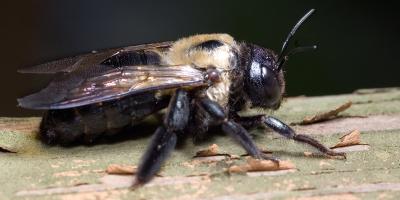Flies In Hospitals: How To Keep Your Facility Fly-Free

For just about any visitor, a trip to the hospital does not usually start out as a pleasant experience. Whether visiting a friend, coming in for a checkup, or receiving medical care, guests typically expect a fairly high level of satisfaction during this already trying time - and one fast way to lose both their trust and their business (as well as your reputation) is to have pests like flies ruining their experience.
When it comes to keeping patients, visitors, staff, and guests satisfied for the duration of their hospital visit, few factors make more of a negative impression than flying pests. That’s why it’s absolutely critical for hospital administrators and operators to move quickly and effectively to remediate any existing fly or pest problems, and to think proactively about pest management to prevent problems before they even start.
Here is a look at how hospital administrators can work to mitigate fly problems in their facilities, and which concrete steps can be taken to implement smart, proactive fly control strategies for hospitals moving forward.
Close Off Entry Points
The first step toward keeping flies from bothering your hospital guests is actually the most straightforward: find out where and how they’re getting inside, and plug that hole.
But as simple as that may seem in principle, actually taking it to concrete action may just be a job better left to a professional.
That’s because flies don’t simply need an open window to find their way in. While physical opening to the outdoors - like cracked doors, ripped or broken window screens, holes in walls, and other openings - can play a key role in allowing flies and other pests inside, the more likely entry points may be just out of reach and difficult to even discern.
Food deliveries, for instance, have been shown to be key transmission points for flies, when adult flies and their eggs can easily find transport from packages of food and water directly into your hospital’s receiving center. From there, it takes only a short while to spread to the rest of the facility.
Likewise, laundry and other linens have long been known to harbor everything from flies to cockroaches to bed bugs, and laundry returning from a service or a laundromat does have the potential to carry eggs or mature individuals into your hospital and directly to customer-facing spaces.
In many cases, an experienced pest professional can help identify these key entry points and create a proactive protocol for keeping flies and other pests from finding their way inside.
Eliminate Sources of Attraction
Like most other pests, flies come into your facility seeking out just a few key resources they need to survive: food, water, and shelter from the elements to lay eggs and raise their young. By creating strategies to minimize access to the first two, administrators can make conditions nearly inhospitable for flies looking to get settled where they don’t belong.
Obviously, flies require food and water to stay alive - and they are anything but picky about where they get either.
Water, for instance, can come from anywhere as major as a poorly-maintained bathroom to something as minor as a leaky pipe behind a wall. If your facility suffer from aging plumbing or pooling around doors, windows, or basements during a rainstorm, you may be providing flies with the perfect place to grab a drink.
Likewise, cafeterias and food storage areas can provide flies and other pests with plenty of food scraps to survive on, especially is cleaning is lacking or not thorough enough to remove food crumbs or residue in preparation areas.
A pest professional will be able to help identify these weak points in your pest prevention system and help you to take action to better shore up your strategy.
Keep Education Front and Center
Even after any fly problems in your hospital have been fully eliminated and any glaring entry points sealed up, the job of keeping flies from infesting your healthcare facility is still only half finished. Just as important as remediation is education, and keeping your staff fully up-to-date on your pest prevention strategy and where they fit into the pest prevention equation.
One major reason for a disconnect between hospital staff and hospital administrators in pest prevention is the fear of repercussion for alerting others of pest problems. If your employees fear they will be punished or reprimanded for alerting an administrator to pest problems, they will be significantly less likely to cooperate with your pest prevention to the best of their abilities - making it that much easier for fly problems to go undetected and potentially reach your guests.
It is well worth any hospital administrator’s time and resources to ensure all staff members - from high-level administrators to custodial staff - receive regular pest prevention training, and know they have the freedom to report problems as soon as they appear. That way, you can operate knowing your staff is all on the same page when it comes to keeping flies from getting settled in your facility.
Act Proactively To Prevent Flies
They say the best defense is a good offense - and for operators of healthcare facilities, that means taking steps to prevent flies and other pests before you ever even spot a problem. That requires a proactive pest prevention strategy - and our pest professionals can help you to implement one in your hospital.
Our Business Protection program offers regular, in-depth, and customized pest management plan set the way you need it. With service frequencies ranging from weekly to quarterly and 24/7, 365 account management access through our JP Customer Web Portal (which includes documentation, manuals, service & trend reports, online bill pay and easy service scheduling), you can keep a closer watch on your pest prevention efforts than ever before.
And if any pest problems - like a fly infestation, or cockroaches, or bed bugs - do appear in your facility, we’ll be just a phone call away, ready to take action and keep your facility - and your patients - away from pests.
If you’re ready to get your hospital protected, or if you’re looking for smarter solutions for your healthcare facility, get in touch and we’ll help determine the best pest prevention plan for your business.



